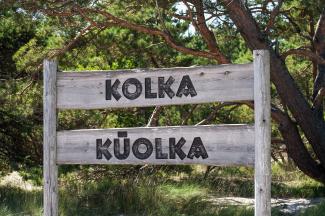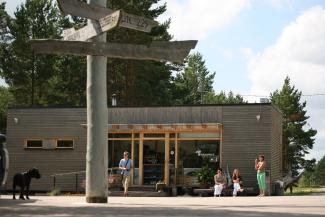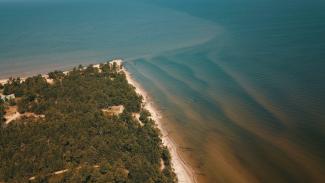Cape Kolka is the most pronounced horn on the shores of Latvia, and it is where the waves from two seas clash – the open Baltic Sea and the Gulf of Riga. During the bird migration season, dozens of thousands of birds fly over the cape, and this is the best place to start a visit to Slitere National Park.
Come spring, Cape Kolka is an ideal place to watch migratory birds. In the summer, it is a paradise on earth for those who love vacations on the beach, while in the autumn and winter it is a fine place to witness the greatness of nature.
At Cape Kolka
- See the waters of the Sea Inlet (Gulf of Riga) and the Great Sea (Baltic Sea) meet
- Visit Cape Kolka Pine Trail and climb the Cape Kolka observation tower
- Taste smoked fish made by local fishermen
- Watch a sunset and wait for the sunrise
- Visit Kolka Village – the Liv cultural centre of Kolka and three confessions’ churches - Kolka Evangelical Lutheran Church, Nativity of Christ Orthodox Church, Mother of God the Morning Star Roman Catholic Church
- Commence your tour of Slitere National Park
Kolka Lighthouse
- Located ~ 5 km to 6 km from Cape Kolka, on an artificial island at the end of a sandbank that extends from the cape.
- Originally a wooden lighthouse first lit in June 1875.
- Once the artificial island settled, the current lighthouse tower was built, it was put into operation on July 1, 1884. The metal tower, 21 metres high, was made in St. Petersburg. Since 1979, the lighthouse has been working in automatic mode.
- Experienced sailors are definitely recommended to sail to Kolka Lighthouse at least once. They have to remember though that the area is good for sailing only 40 days a year.
Liv Coast
The old Liv fishing villages, including Kolka (Kuolka), are located on the shores of Kurzeme from Melnsils to Luzna. Livs or Livonians are a small, westernmost group of Finno-Ugric peoples living at the Baltic Sea. The spirit of the Livs permeates everything in this part of Latvia – from the way the locals speak, to culture, traditions, and tenacity of those who have been living at the sea for centuries. The small fishing villages on Kurzeme shores feature boat wharves, net warehouses, old buildings (starting from the 18th century), and exhibitions of traditional and ancient items, they also have ample lodging options for rural tourists.
Location and sights nearby









